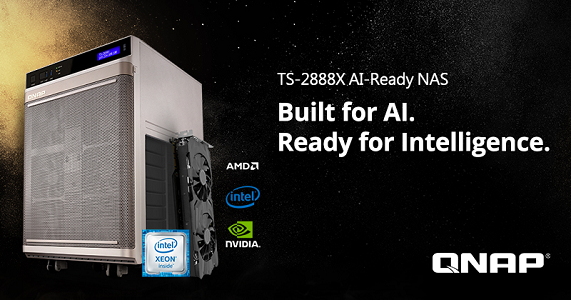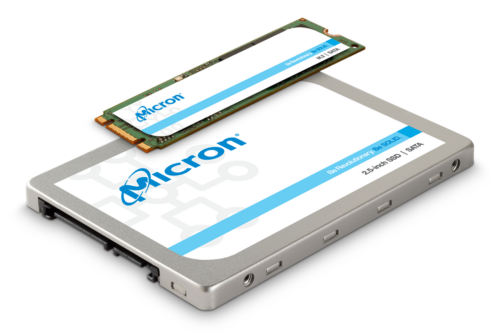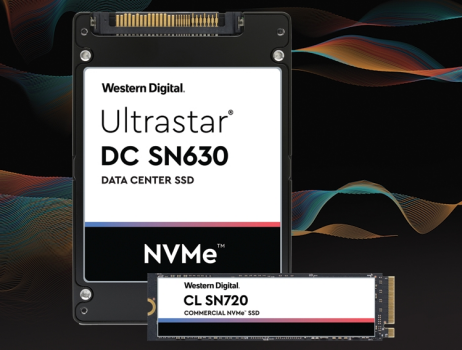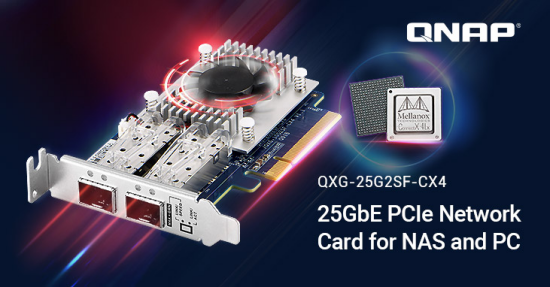- Details
- Flash Memory
 Toshiba Memory America, Inc., the U.S.-based subsidiary of Toshiba Memory Corporation, announced availability of its XD5 Series NVMe SSD platform in a 2.5-inch, 7mm low-profile form factor that is optimized for low-latency and performance consistency in read-intensive workloads. Developed for both data center and cloud environments, the new 2.5-inch form factor XD5 Series is ideal for NoSQL databases, large-scale-out data mining and analysis, and streaming applications. The XD5 Series is also well-suited for Open Compute Project (OCP) applications and systems.
Toshiba Memory America, Inc., the U.S.-based subsidiary of Toshiba Memory Corporation, announced availability of its XD5 Series NVMe SSD platform in a 2.5-inch, 7mm low-profile form factor that is optimized for low-latency and performance consistency in read-intensive workloads. Developed for both data center and cloud environments, the new 2.5-inch form factor XD5 Series is ideal for NoSQL databases, large-scale-out data mining and analysis, and streaming applications. The XD5 Series is also well-suited for Open Compute Project (OCP) applications and systems.
Built on 64-layer BiCS FLASH™ TLC (3-bit-per-cell) 3D flash memory, and featuring a PCIe® Gen3x4 interface, the new XD5 SSD 2.5-inch option delivers sequential read performance up to 2,700 megabytes per second (MB/s) and sequential write performance up to 895MB/s with low active power consumption of 7 watts. At one drive write per day4 (DWPD), the XD5 Series can write nearly 4 terabytes (TB) of random data daily for five years at a consistent performance rate. Random read/write performance is specified at 250,000/21,000 Input/Output Operations per Second (IOPS) respectively, making the XD5 Series a predictable and reliable solution for read-intensive or heavy transactional workloads.
The XD5 2.5-inch Series expands Toshiba Memory’s broad data center SSD portfolio and complements the previously released M.2 22100 form factor which supports 1,920 gigabyte (GB) and 3,840GB capacities. The flash memory and controllers leveraged within the XD5 Series offer high reliability, data protection, end-to-end error detection and power-loss protection, and the product is backed by a five-year limited warranty.
Add a comment- Details
- Duplicators
Vinpower Digital, a recognized global manufacturer and distributor of digital duplication equipment and accessories, has recently finalized the acquisition of the complete digital duplication product line from the world renowned ACARD Technology Corporation, a Taiwan publicly traded company in the OTC market. With the acquisition of ACARD’s proprietary native SATA IC’s and storage CPU / SOC technology, in addition to other related IP’s, Vinpower will position itself as the leading global manufacturer of digital duplication and storage related hardware and accessories. Plus, for those who have purchased ACARD products previously, Vinpower is committed to providing worldwide technical support for ACARD’s existing global customer base.
To accommodate the expansive global duplication marketplace, Vinpower Digital has announced it will utilize the extensive technology and IP’s acquired from ACARD to advance development in its own market leading duplication and storage hardware. In utilizing ACARD’s proprietary CPU / SOC, will allow Vinpower to quickly develop and release duplication and storage products for nearly any storage technology available now or will be introduced in the future at a much lower price point than existing development techniques used by other manufacturers. The ACARD CPU / SOC includes added storage interfaces and the ability to implement virtually unlimited internal and/or external daisy chain functionality, expanding the size and scope of any storage hardware Vinpower develops in the future.
Add a comment- Details
- Other
The USB Promoter Group today announced the pending release of the USB4 specification, a major update to deliver the next generation USB architecture that compliments and builds on the existing USB 3.2 and USB 2.0 architectures. The USB4 architecture is based on the Thunderbolt protocol specification recently contributed by Intel Corporation. It doubles the bandwidth of USB and enables multiple simultaneous data and display protocols.
The new USB4 architecture defines a method to share a single high-speed link with multiple end device types dynamically that best serves the transfer of data by type and application. As the USB Type-C™ connector has evolved into the role as the external display port of many host products, the USB4 specification provides the host the ability to optimally scale allocations for display data flow. Even as the USB4 specification introduces a new underlying protocol, compatibility with existing USB 3.2, USB 2.0 and Thunderbolt 3 hosts and devices is supported; the resulting connection scales to the best mutual capability of the devices being connected.
“The primary goal of USB is to deliver the best user experience combining data, display and power delivery over a user-friendly and robust cable and connector solution,” said Brad Saunders, USB Promoter Group Chairman. “The USB4 solution specifically tailors bus operation to further enhance this experience by optimizing the blend of data and display over a single connection and enabling the further doubling of performance.”
Add a comment- Details
- Network Storage
QNAP Systems, Inc. today officially launched the TS-2888X, an AI-Ready NAS specifically optimized for AI model training. Built using powerful Intel Xeon W processors with up to 18 cores and employing a flash-optimized hybrid storage architecture for IOPS-intensive workloads, the TS-2888X also supports installing up to 4 high-end graphics cards and runs QNAP’s AI developer package “QuAI”. The TS-2888X packs everything required for machine learning AI, greatly reducing latency, accelerating data transfer, and eliminating performance bottlenecks caused by network connectivity to expedite AI implementation.

Conventional AI workstations usually have massive price tags, and the complexity of configuring hardware and software is an obstacle for most data scientists and developers. The use of public clouds for storage and training may also raise concerns when using sensitive data. QNAP’s TS-2888X introduces an all-in-one AI solution that integrates huge storage potential, powerful computing, a ready-to-use AI environment, and comprehensive data protection to supplement AI workflows. It not only serves as a Training Server for AI models, but can also serve as an Inference Server, thereby further lowering the R&D entry barrier, making AI development more feasible and easily accessible.
Add a comment- Details
- Flash Memory
Micron Technology, Inc. today added a new cost-efficient solid-state drive (SSD) to its client computing portfolio. The Micron 1300 SSD makes flash storage accessible to more users, enabling its adoption in a broader set of personal computing devices for a better mobile computing experience. Consumers who are eager to move from rotating media to solid state drives value fast performance, quick startup, and reliability -- whether for desktop, mobile or workstation PCs. SSDs address these needs better than power-hungry hard disk drives (HDDs), yet their higher prices have kept users from shifting to SSDs. Micron redesigned the 1300 SSD series to close the price gap.

"The deployment of advanced 3D NAND technologies has led the client SSD market to branch into value and higher-performance storage segments," said Gregory Wong, president of Forward Insights. "Micron's latest client SSD solutions provide a coherent migration path from HDD to value-oriented SSDs."
Add a comment- Details
- Flash Memory
Western Digital Corp. today announced two new additions to its broad portfolio of NVMe-based systems, platforms, SSDs, and memory drives for data center and cloud customers. With a full portfolio covering applications from edge-to-core, these additions are the Western Digital Ultrastar DC SN630 NVMe SSD and the Western Digital CL SN720 NVMe SSD. Each leverages the power of Western Digital’s vertical integration capabilities, including internally developed controller and firmware architectures, and 64-layer 3D NAND technology. As a replacement for lower-performing SATA SSDs, these new NVMe drives meet the insatiable need for performance, scalability, endurance and low total cost of ownership (TCO) for public and private cloud deployments, hyperscale cloud environments, and next-generation workloads at the edge.

IT managers face challenges such as managing multiple workload types, scaling at optimal TCO, and controlling server sprawl. Due to its inherent scalability and performance benefits, NVMe is quickly becoming the de facto standard for everything from traditional scale-up database applications to emerging edge computing architectures.
Add a comment- Details
- Flash Memory
Samsung Electronics Co., Ltd., the world leader in advanced memory technology, today announced that it has begun mass producing the industry’s first 512-gigabyte (GB) embedded Universal Flash Storage (eUFS) 3.0 for next-generation mobile devices. In line with the latest eUFS 3.0 specification, the new Samsung memory delivers twice the speed of the previous eUFS storage (eUFS 2.1), allowing mobile memory to support seamless user experiences in future smartphones with ultra-large high-resolution screens.

“Beginning mass production of our eUFS 3.0 lineup gives us a great advantage in the next-generation mobile market to which we are bringing a memory read speed that was before only available on ultra-slim laptops,” said Cheol Choi, executive vice president of Memory Sales & Marketing at Samsung Electronics. “As we expand our eUFS 3.0 offerings, including a 1-Terabyte (TB) version later this year, we expect to play a major role in accelerating momentum within the premium mobile market.”
Add a comment- Details
- Network Storage
QNAP Systems, Inc. today unveiled the new dual-port 25GbE QXG-25G2SF-CX4 and 10GbE QXG-10G2SF-CX4 network NICs. Featuring Mellanox ConnectX-4 Lx SmartNIC controllers, these cards can greatly boost file transfer speeds and also support iSER (iSCSI Extension for RDMA) to optimize VMware virtualization. Both cards are PCIe Gen3 ×8 and can be installed in a Windows®/Linux® PC or compatible QNAP NAS.

“Cloud, big data, high-speed storage, virtualization, and AI are strongly pushing 25GbE into the mainstream,” said Dan Lin, Product Manager of QNAP, adding “QNAP now provides users with a scalable solution for adopting 25GbE infrastructure by leveraging the industry-leading Mellanox Ethernet solution to deliver a next-gen 25GbE NIC for NAS, servers and workstations."
Add a comment- Details
- Flash Memory
 As consumer demand for high-quality content continues to rise, Western Digital Corp. is enabling a bigger, faster experience with new industry-leading solutions that give consumers the best combination of performance and capacity so they can do more with the rich content they capture. At Mobile World Congress, the company is showcasing the world’s fastest 1TB UHS-I microSD flash memory card, the 1TB SanDisk Extreme UHS-I microSDXC card. The new card features higher speed and capacity for capturing and moving massive amounts of high-quality photos and videos on smartphones, drones and action cameras. These impressive levels of capacity and speed give consumers the ability to create all the content they want without worrying about space limitations or long transfer times.
As consumer demand for high-quality content continues to rise, Western Digital Corp. is enabling a bigger, faster experience with new industry-leading solutions that give consumers the best combination of performance and capacity so they can do more with the rich content they capture. At Mobile World Congress, the company is showcasing the world’s fastest 1TB UHS-I microSD flash memory card, the 1TB SanDisk Extreme UHS-I microSDXC card. The new card features higher speed and capacity for capturing and moving massive amounts of high-quality photos and videos on smartphones, drones and action cameras. These impressive levels of capacity and speed give consumers the ability to create all the content they want without worrying about space limitations or long transfer times.
Today’s smartphones and cameras allow consumers to create high-quality content in the palm of their hands, thanks to features like multi-lenses, burst mode capabilities and the 4K resolution. Western Digital continues to deliver the most advanced solutions to ensure consumers can reliably capture and share a special moment or create video content for personal or professional use.
Add a comment- Details
- Flash Memory
The SD Association announced today microSD Express, offering the popular PCI Express and NVMe interfaces alongside the legacy microSD interface for backwards compatibility. Like SD Express, microSD Express uses the PCIe interface delivering a 985 megabytes per second (MB/s) maximum data transfer rate and the NVMe upper layer protocol enables advanced memory access mechanism, enabling a new world of opportunities for mobile devices.

microSD Express cards defined in the SD 7.1 specification will be offered in a variety of capacities such as microSDHC Express, microSDXC Express and microSDUC Express. An updated video provides an overview of microSD Express and SD Express.
Add a comment
